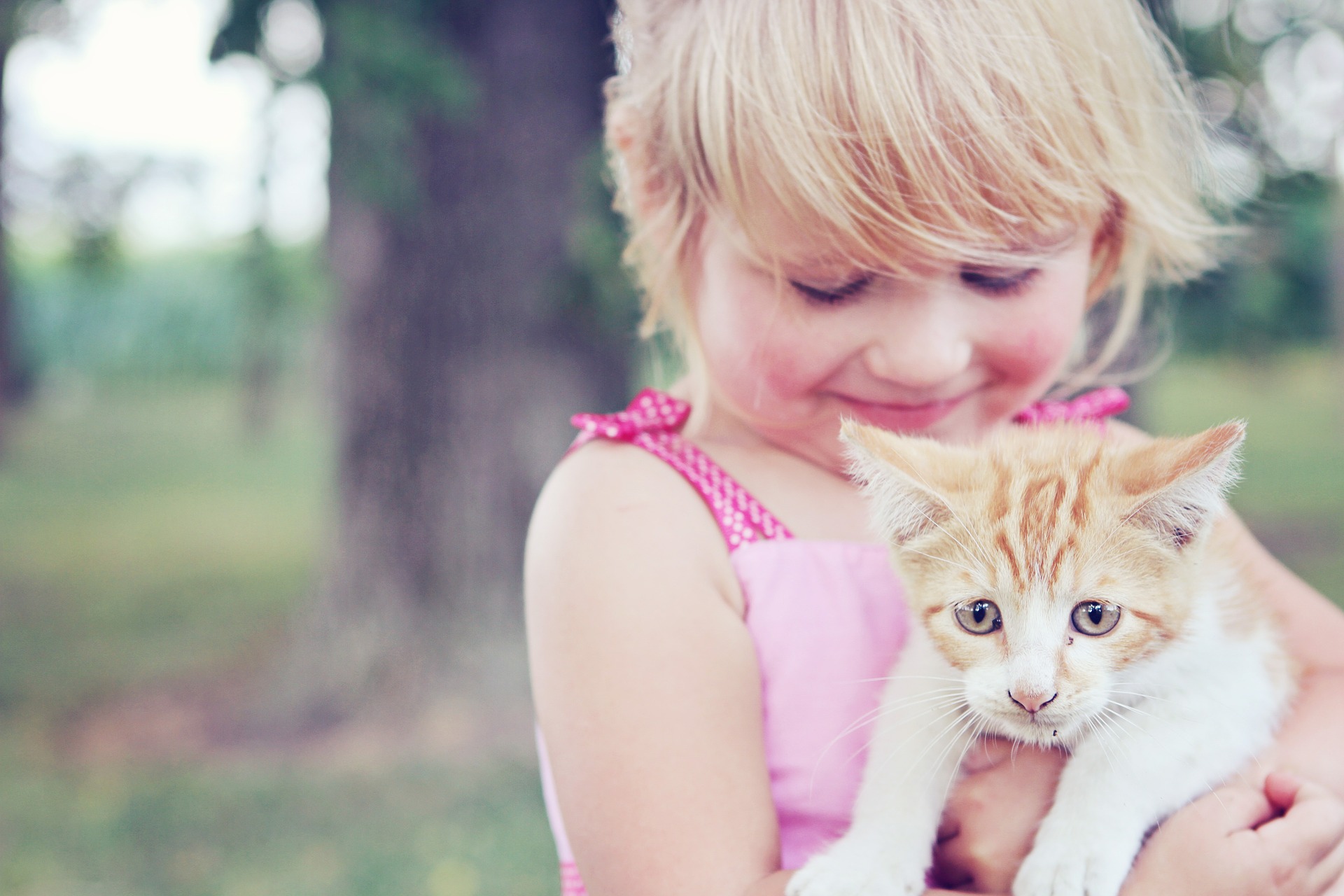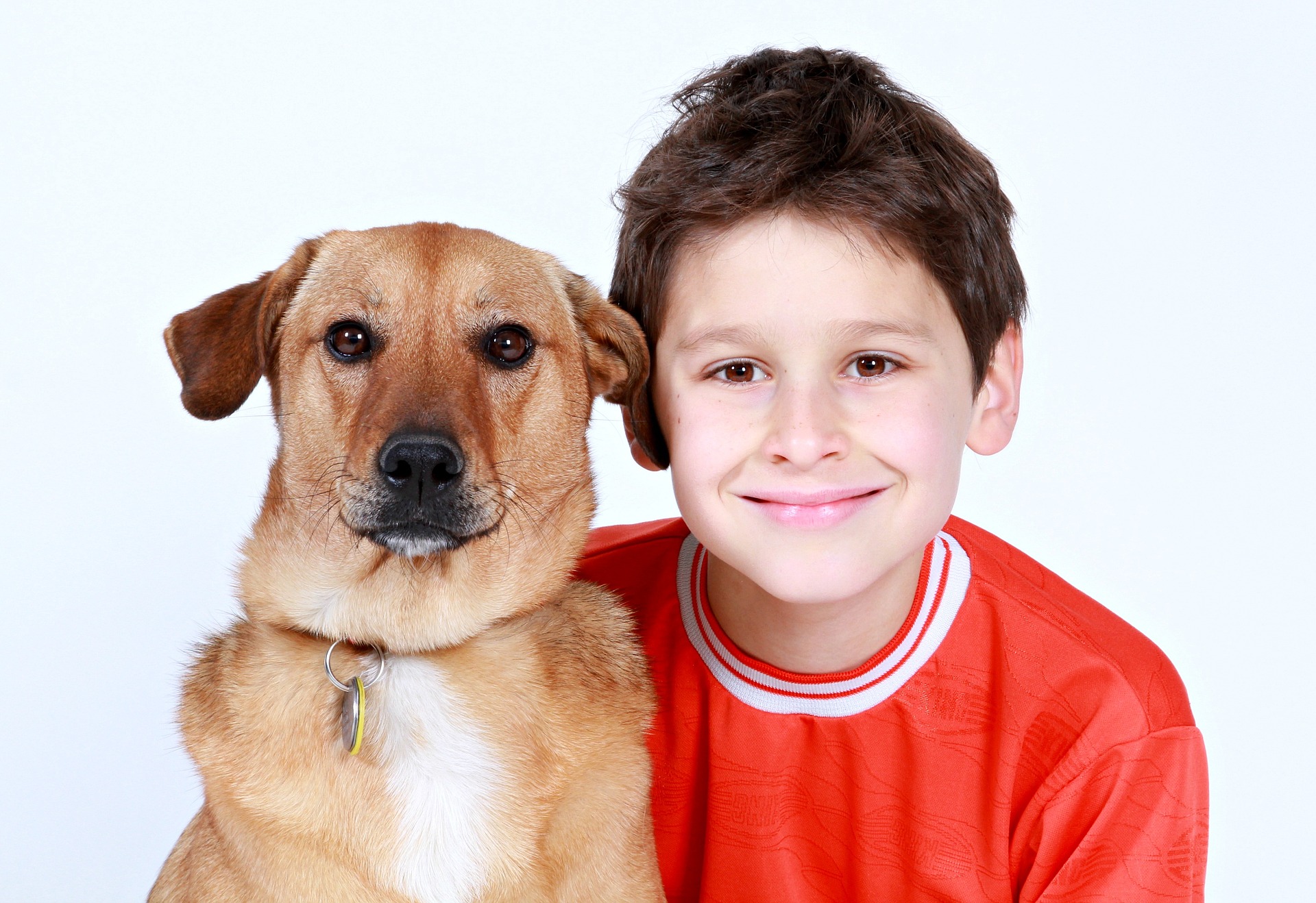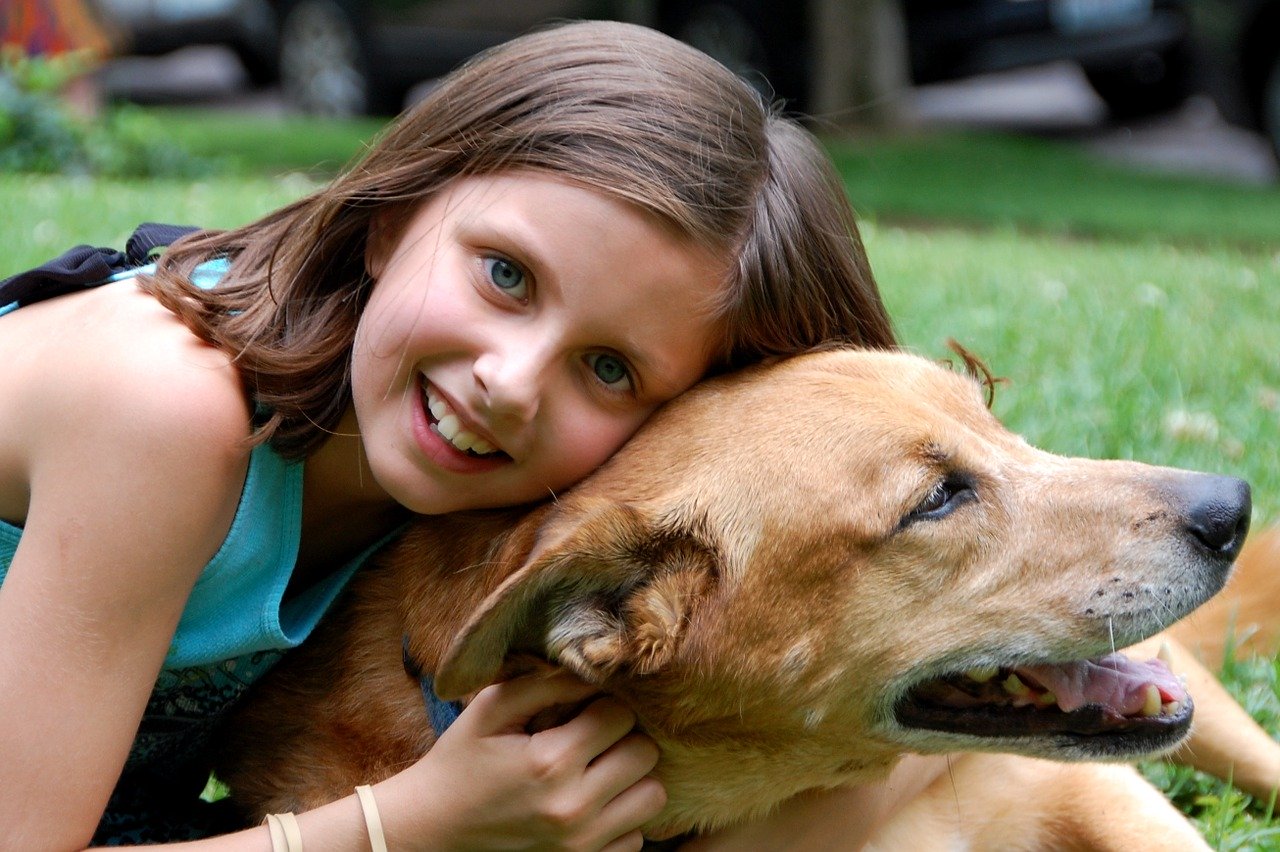Having a pet or just interacting with 4-legged friends has been shown to provide many benefits for children. This can be especially true for children who have special needs. Interacting with animals offers many wonderful health benefits for teens and adults, too!
Here are some of the ways pets can benefit children:
1. Stress Reduction - Research has demonstrated that having a pet reduces stress in households. A study conducted by the University of Montreal in 2010 found that children who have a dog in the home produce less of the stress hormone (cortisol) than children without dogs in the home (Viau et al., 2010). A study by the University of Washington that focused on college students found that "Just 10 minutes of interacting with cats and dogs produced a significant reduction in students' cortisol" (Pendry & Vandagriff, 2019).

2. Social Skills - A 2013 study conducted by O’Haire et al. found that children with autism demonstrated significantly more social approach behaviors (eye contact, talking, tactile contact) after interacting with an animal when compared to interacting with a toy. Pets can provide great opportunities for working on non-verbal communication. Children can learn to interpret wagging tails, purring, barking, growling, rolling over, nudging, and more through interacting with animals. This can help build a foundation for learning to interpret non-verbal communication with other people. Additionally, pets give children someone to connect with. A child who may feel he/she has little in common with his/her peers may feel comfortable introducing their pet, teaching others how to play with their pet, and showing off "tricks" their pet can do! These types of opportunity for positive interactions and attention from peers can be a big confidence builder and self-esteem booster that helps lead to increased socialization.
3. Mood and Affect - The 2013 study conducted by O’Haire et al. found that children with autism were more likely to demonstrate prosocial behaviors (laughing and smiling) and less likely to demonstrate self-focused negative behaviors (like crying or whining) after interacting with an animal when compared to interacting with a toy. Research from the University of Lincoln also found that children are less likely to experience a meltdown in the presence of a pet dog (Hall, et al., 2016). The unconditional love and affection of a pet can be a positive mood booster for individuals of all ages.

4. Friendship - Pets can provide a nice social outlet and opportunities to practice interacting with others; something that can be hugely beneficial for children who struggle socially or have difficulty making friends. Some children may find it easier to bond with a pet than with other children. Successfully cultivating a relationship with a family pet can help build confidence, which can lead to increased self-efficacy in social situations.
5. Language - Interacting with a pet provides nice opportunities for language development. Children learn how to give commands (sit, stay, come, etc.) and by including a pet in their daily routine, many children will naturally begin talking with the pet throughout the day. Encourage the child to describe what they see to the pet, to give the pet instructions, make comparisons (big dog vs small dog; dog vs cat, etc) and more! Older kids can use a pet as a reading buddy. Children are often willing to interact with animals when they may not be willing or easily able to interact with other individuals.

6. Building a Sense of Responsibility - Pets require a lot of work and can provide great opportunites to teach children about responsibility by helping with some of the tasks involved with caring for a pet. Let your child help feed, brush, refill water dishes, play with, pick up their toys, and/or take pets for a walk. Participating in multi-step chores (such as feeding a pet) can help build important skills like sequencing, following directions, fine motor, motor planning, executive function skills, and more.
7. Sensory - Caring for pets can provide great opportunities for sensory input. Bathing, petting, and brushing pets can offer nice doses of tactile input and can be really beneficial for tactile sensory seekers or avoiders. Walking dogs, playing fetch, keeping pet toys picked up, and carrying/lifting heavy food bags can provide vestibular and proprioceptive deep pressure input.

9. Increased opportunities for socialization - Taking pets for a walk or to the park often results in other pet lovers stopping to chat or pet your pet, or providing compliments; providing opportunities for natural, non-threatening types of social interaction. Having someone else provide compliments, ask questions, or even permission to pet your dog can make the interaction less stressful than social interaction might otherwise be. Having a mutual interest and not having to take the lead on initiating and keeping a conversation going can make it a lot easier to socialize successfully.
10. Other Health Benefits - Other health-related benefits that articles and experts often note as being associated with having a pet include: decreased blood pressure / cholesterol / triglyceride levels, increased opportunities for exercise and outdoor activities, boosting immune systems, and decreased feelings of loneliness (Qureshi et al., 2009). An article about pets in Women's Magazine stated "If you have a cat, you're 30 percent less likely to have a heart attack, and 40 percent less likely to have a cardiovascular incident like a stroke." Studies have also found that pet ownership may increase life expectancy (Kramer et al., 2019).
Our entire Therapy Shoppe family are all huge pet lovers – Bella, our resident therapy dog (see her pic below) is our most beloved member! Bella loves delivering notes, playing outside whenever one of us needs a little sensory break, and alerting our warehouse team whenever the UPS or FedEx truck is coming down the street. She keeps us smiling, active, and at a "just right" level of alertness every day. Furry friends can be such a wonderful source of joy and companionship, and can provide a wealth of other benefits. Thank you Bella!

Hall, S. S., Wright, H. F., & Mills, D. S. (2016). What Factors Are Associated with Positive Effects of Dog Ownership in Families with Children with Autism Spectrum Disorder? The Development of the Lincoln Autism Pet Dog Impact Scale. PloS one, 11(2), e0149736. doi:10.1371/journal.pone.0149736
O'Haire ME, McKenzie SJ, Beck AM, Slaughter V (2013) Social Behaviors Increase in Children with Autism in the Presence of Animals Compared to Toys. PLOS ONE 8(2): e57010. https://doi.org/10.1371/journal.pone.0057010
Kramer, C., & Suen, R. (2019). Dog Ownership and Survival A Systematic Review and Meta-Analysis. Circulation: Cardiovascular Quality and Outcomes, 12(10).Pendry, Patricia & Vandagriff, Jaymie. (2019). Animal Visitation Program (AVP) Reduces Cortisol Levels of University Students: A Randomized Controlled Trial. AERA Open. 5. 233285841985259. 10.1177/2332858419852592.
Qureshi, A. I., Memon, M. Z., Vazquez, G., & Suri, M. F. (2009). Cat ownership and the Risk of Fatal Cardiovascular Diseases. Results from the Second National Health and Nutrition Examination Study Mortality Follow-up Study. Journal of vascular and interventional neurology, 2(1), 132–135.
Viau Robert, Arsenault-Lapierre Geneviève, Fecteau Stéphanie, Champagne Noël, Walker Claire-Dominique, Lupien Sonia. Effect of service dogs on salivary cortisol secretion in autistic children. Psychoneuroendocrinology, 2010; 35 (8): 1187 DOI: 10.1016/j.psyneuen.2010.02.004
Therapy Shoppe® OT Mom Pet Lover, January 23, 2020
©2020 Therapy Shoppe® Incorporated. All rights reserved.

